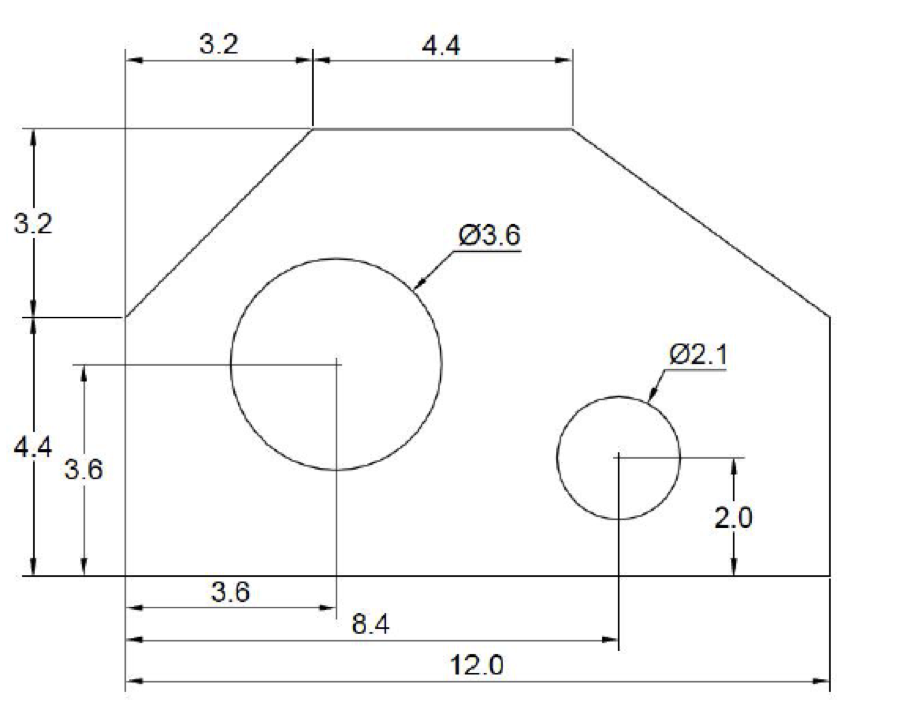2d Autocad Practice Drawings Pdf Printer
How to Use these PRACTICE Drawings Best! • Review the hard copy manual to decide which bonus exercise drawings you like most. • Copy the DVD's folder BONUS_EXERCISES_20 & contents to the root of C: or D: drive. AutoCAD Tutorial: 2D Fundamentals Add-1 (Unless otherwise specified, dimensions are in inches.) 1.
Install mysql module php windows apache. The Adobe® Portable Document Format (PDF) is a compressed electronic document format that can be viewed on multiple platforms. PDF files are widely used to transmit drawing data over the Internet.
Commands that Create PDF files
There are many commands and methods you can use to produce PDF files. Use these guidelines to select the most appropriate method.
| Operation | Recommended Command/Workflow |
|---|---|
| Export model space or a single layout to a PDF file | The PLOT or EXPORTPDF command |
| Export all layouts of a drawing to a PDF file | The EXPORTPDF command |
| Export selected layouts of a drawing to PDF | The PUBLISH command |
| Export model space and selected layouts to PDF | The PUBLISH command |
| Export multiple drawing files to PDF | The PUBLISH command |
| Export a sheet set to a PDF file | The Publish to PDF option in the Sheet Set Manager |
PDF Presets
PDF presets are named groups of settings that control the PDF creation process and are saved as plotter configuration files (*.pc3). Presets let you balance the file size with quality and functionality, depending on how you want to use the PDF files. The predefined PDF presets listed address most typical usage scenarios. Epson r230 printer flash software. However, if you have specific requirements that a predefined preset cannot meet, customize an existing preset and save it as a *.pc3 file with a different name.
| PC3 File / PDF Preset | Details |
|---|---|
| DWG to PDF.pc3 | General purpose driver used in AutoCAD 2015 and earlier. |
| AutoCAD PDF (General Documentation).pc3 | General purpose driver suitable for most uses. |
| AutoCAD PDF (High Quality Print).pc3 | Produces a PDF file optimized for printing on paper. |
| AutoCAD PDF (Smallest File).pc3 | Produces a PDF with the smallest possible file size. |
| AutoCAD PDF (Web and Mobile).pc3 | Produces a PDF file that supports hyperlinks mobile devices and Web browsers. |
Autocad Practice
Considerations for TrueType Fonts
If a PDF viewer does not have access to a font that you used in a drawing, it displays the affected text using a substitute font. Often, the substitute font doesn't match up to the original font. Consequently, the text in the drawing can appear different than the text in the PDF file.
You can prevent font substitution by capturing the font in the drawing and embedding it in the PDF file. Alternatively, you can convert all text to geometry. Converting text to geometry ensures that the text in the PDF file is identical to that of the drawing. However, the PDF file size increases and text pixelation can occur when you view the PDF file at a high magnification. You can reduce pixelation by increasing raster image quality.
Autocad Practice Pdf

Limitations
- Resolution - The highest possible resolution of PDF data is 4800 dpi.
- 3D Visual Styles - All viewports, model space or layout that have a 3D Visual style applied to them are converted to raster images when plotted to PDF. As a result, drawing information such as the layers within the viewport is lost. Furthermore, text within the viewport is not searchable, and hyperlinks are removed.
- Printing PDF files - If you use the Adobe Acrobat Reader default printer settings to print a PDF drawing, transparent objects and wipeouts might not print correctly. If the PDF file contains transparent objects, you may need to adjust some settings in Adobe Acrobat. Set Transparency Flattening to 'Print as Image' or reduce the Raster/Vector Balance in Adobe Acrobat. Refer to the Adobe documentation for more information.
- Loss of precision - PDF stores data in single precision numbers, while DWG stores data as double-precision numbers. This loss of precision can become apparent as:
- Round-off errors on computed locations of objects, such as the locations of tangent points, and arc radiuses and their endpoints.
- Round-off errors on large coordinates such as those found in geolocated drawings.
- Deformities and round-off errors in tiny objects when a drawing contains very large objects as well as tiny objects.